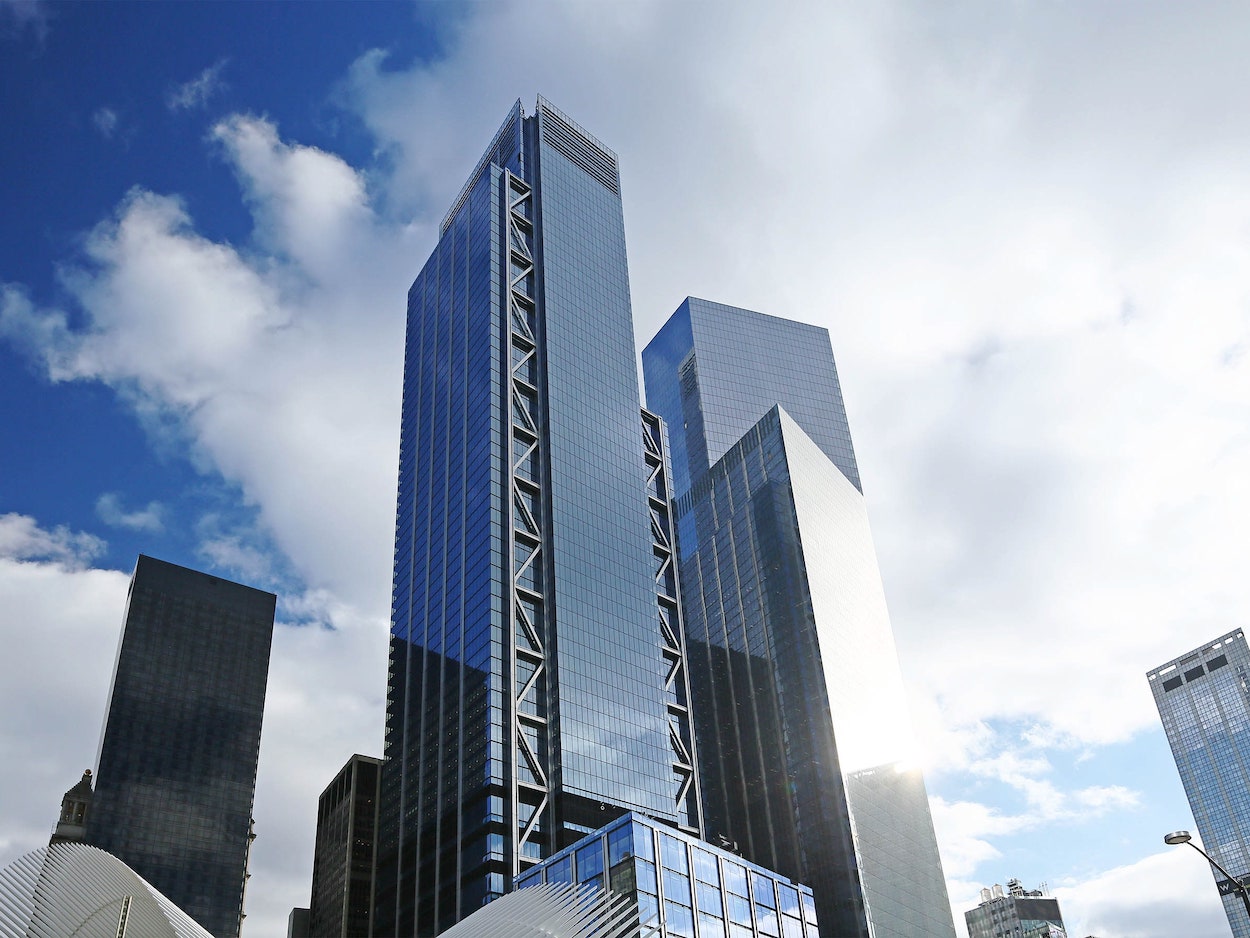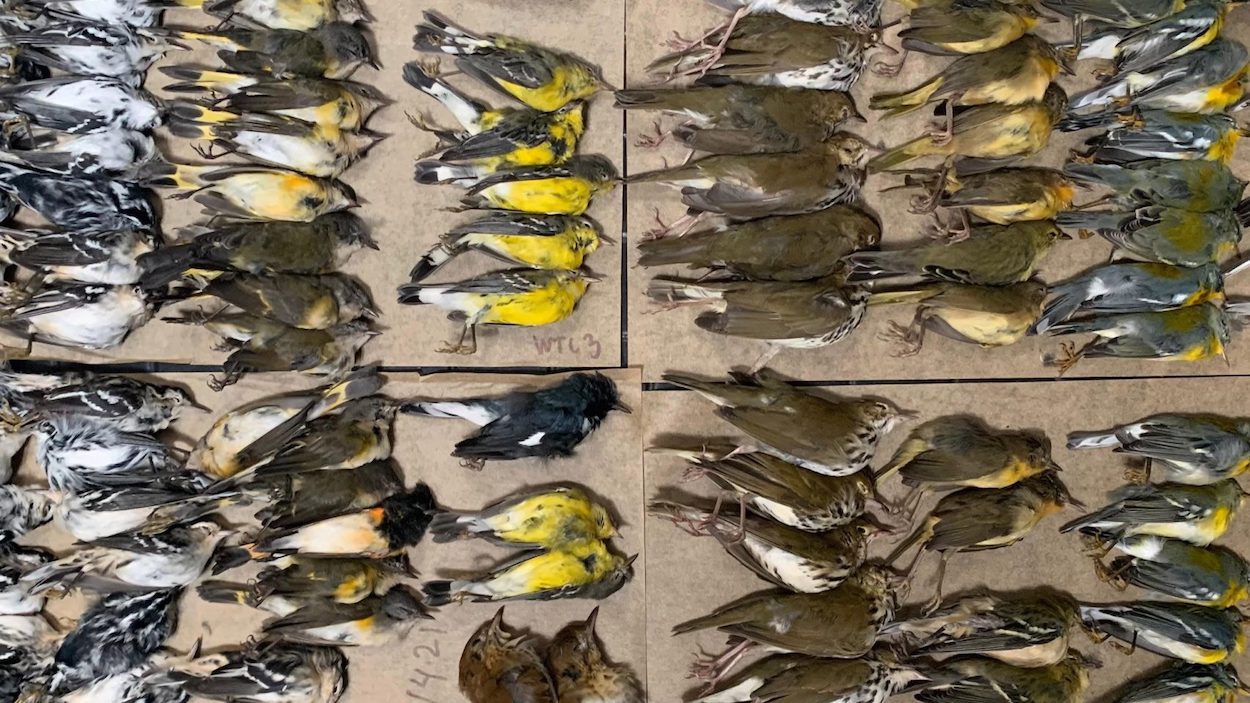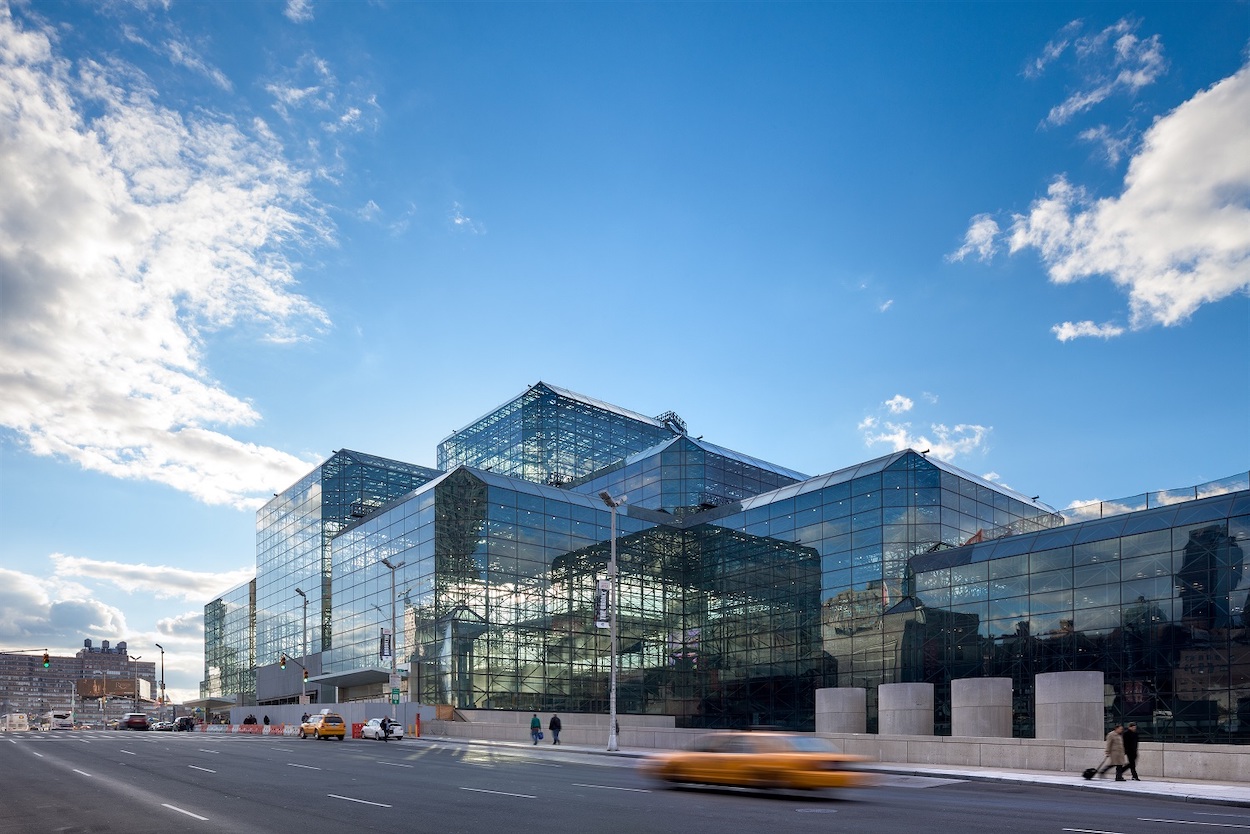On a brisk fall morning this past September, Melissa Breyer was conducting routine collision monitoring at the World Trade Center for NYC Audubon, a grassroots nonprofit that works to protect wild birds across the five boroughs. What the Treehugger editorial director found shocked both her and her Twitter followers: nearly 300 bird carcasses littered the plaza surrounding the glassy buildings. Harrowing footage shows her picking up and bagging the birds’ lifeless bodies, strewn just feet away from each other. It’s not easy to look at—nor is an image of the carcasses neatly arranged in rows by species.
Glazed and mirrored buildings account for one billion deaths of birds in the U.S. each year. In the eyes of People for the Ethical Treatment of Animals (PETA), architects are largely to blame. Birds can easily mistake glassy reflections for open skies, or become disoriented and lured off their migratory paths by interior lighting that shines through them after dark. According to the National Audubon Society, these fatalities account for two to nine percent of all birds in North America in any given year. Building strikes are one of biggest threats to avian populations, second only to feral cats.
Thanks in part to the popular pandemic pastime of bird-watching, interest in protecting avian populations is surging. Despite this, buildings continue to be designed with glazed or mirrored facades. Most avian deaths can be prevented by architects taking simple and inexpensive steps to amend their schemes, including “replacing plain glass with acid-etched, fitted, or frosted glass; ultraviolet patterned glass; or channel glass,” Jared Goodman, PETA’s general counsel for animal law, tells Dezeen. “These bird deaths are due more to negligence or simple indifference [as opposed] to the cruelty inherent in animal agriculture or the fur industry. All architects must take into account and attempt to reduce the impact of their designs on the sentient beings around us.”
Collision-proofing entire cities along migratory paths may seem like a daunting task, but there are success stories. The glass-clad Jacob K. Javits Convention Center in Manhattan was once a major site of avian fatalities, but a half-billion-dollar renovation spearheaded by local firm FXCollaborative transformed the hub into perhaps one of the city’s most hospitable sites for birds. “The bird collision issue is part of the larger picture of human impact on the world and unintended consequences,” says Daniel Piselli, the firm’s director of sustainability. “We’re trying to connect ourselves with the outdoors and nature through glass, but we are literally killing the nature we’re trying to see.”
Given that the vast majority of bird collision deaths happen at below 100-foot elevations, the firm spent five years replacing the building’s glass with bird-safe panels covered in ceramic dots virtually imperceptible to the human eye. Avian deaths plummeted 90 percent. The results prove that collision-proofing doesn’t need to sacrifice design ambition, considering other safe structures around town include Frank Gehry’s icy IAC Building, and the ceramic-clad New York Times Building by Renzo Piano.
Thankfully, lawmakers are catching on. Several major American cities have enacted measures to mitigate avian fatalities in recent years, including Chicago, Philadelphia, and San Francisco. New York City overwhelmingly passed the country’s most comprehensive collision-proofing legislation in 2019, requiring bird-friendly materials on 90 percent of facades up to 75 feet and up to 12 feet above green roofs. Detractors countered that the bill could raise construction costs, but saving the birds has wider economic benefits. In a 2009 analysis, the U.S. Fish and Wildlife Service calculated that birds generate $82 billion in economic output, employ 671,000 people, and can enrich state and federal governments by $10 billion.
The finances, however, should be secondary: “People are becoming increasingly aware of this issue, and as architects learn that it’s important to the public, more and more buildings will be constructed with design elements that help keep birds safe,” Goodman says. “All architects must take into account end attempt to reduce the impact of their designs on the sentient beings around us.”



